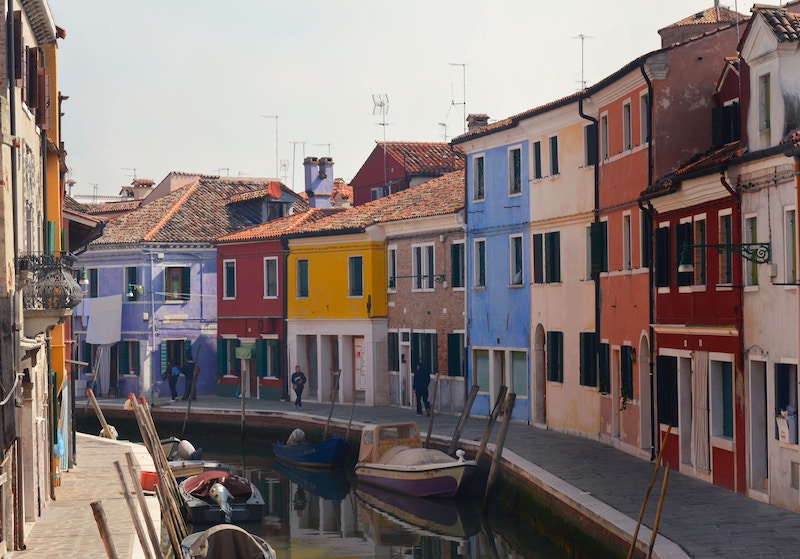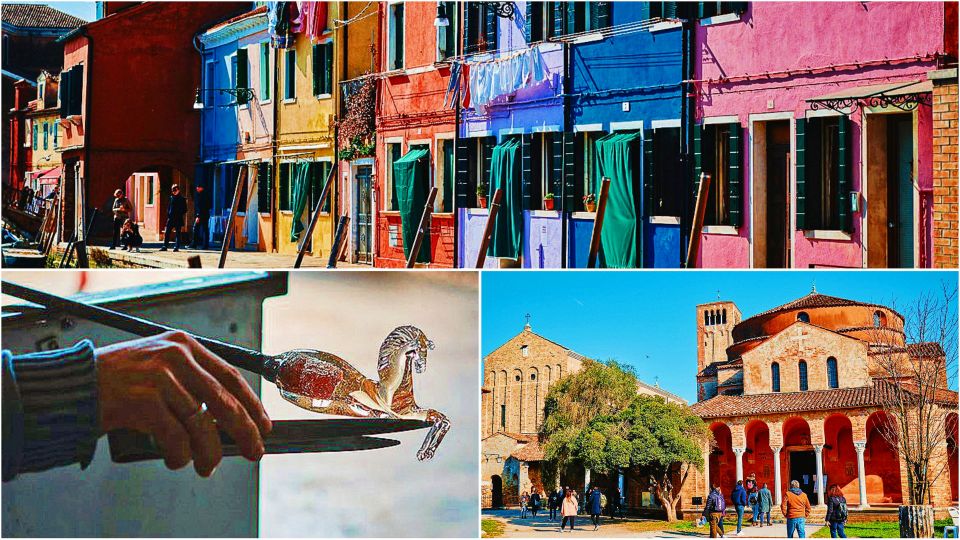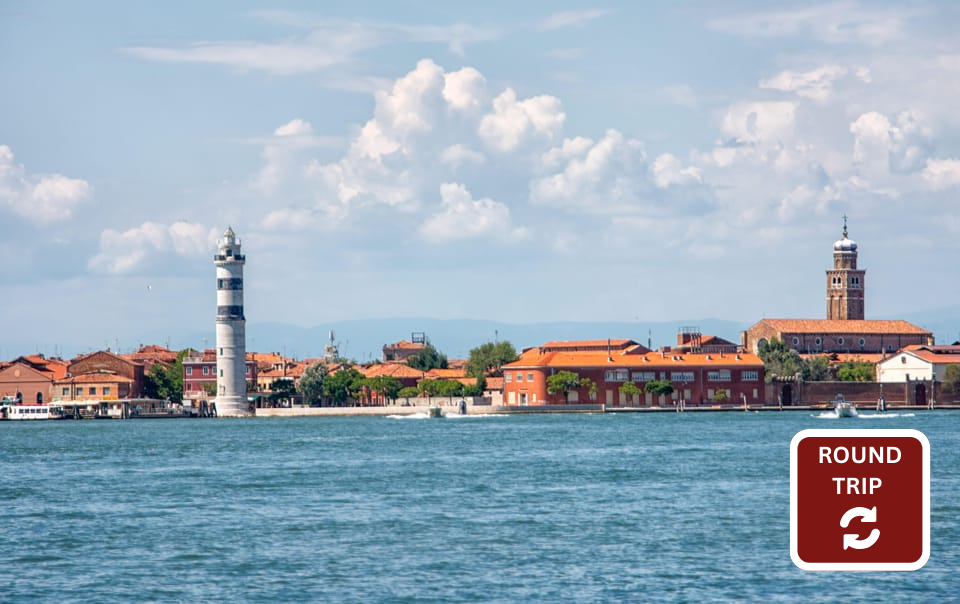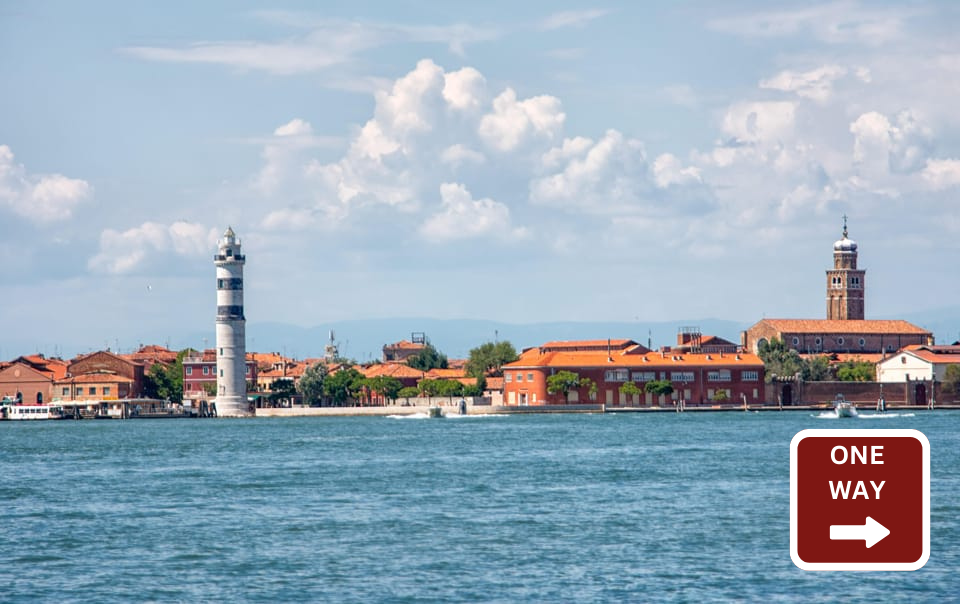Step off the vaporetto from Venice, and you’ll find yourself on the captivating island of Burano, Venice. As you disembark, the first thing that catches your eye is the vibrant array of colourful houses, forming a striking panorama. Unlike the jarring “punch in the eye,” this sight is nothing short of breathtaking. From pea green to lobster pink, ochre to azure, fiery red to canary yellow, the houses of Burano create a magical, almost fairy-tale-like atmosphere. Each house boasts a unique colour that has set it apart from its neighbours for years. This begs the question: why are Burano’s houses so wonderfully colourful? Let’s delve into the island’s history to uncover the answer.
A tale of survival and adaptation
In the days of barbarian invasions, the inhabitants of Altino, on the mainland, a prosperous and historically significant centre even before Roman times, had to abandon their city to escape constant raids. They sought refuge on the neighbouring islands of the lagoon, including Murano, Mazzorbo, Torcello, Ammiana, Costanziaco, and, of course, Burano (named after “Porta Boreana,” the northern gate of the old Altino). The first settlements on Burano consisted of houses built on stilts, crafted from woven reeds and covered in mud. It was only later, likely due to the “Romanization” of the area, that brick houses began to emerge, yet their colours were not yet evident.
Burano’s early inhabitants were primarily humble fishermen. It wasn’t until the art of renowned lace-making began to flourish that the island’s economy and reputation received a significant boost. Its exposed location, susceptible to winds and tides, also kept malaria at bay, which had unfortunately ravaged nearby Mazzorbo and Torcello. However, the hard-working fishermen continued with their trade, despite the challenges posed by frequent winter fogs.
The mystery of the colours: fog and more
Here’s where the fog comes into play. The most widely accepted belief regarding the different house colours in Burano is related to the fact that fishermen decided to paint their homes with distinctive colours. This way, they could easily locate their residences, even during the thickest of fogs.
Another theory suggests that the various house colours identified different families on the island. Given that many families shared the same surnames, a common issue arose. To distinguish themselves, families either adopted nicknames or identified themselves by the colour of their homes.
Then there’s yet another fascinating belief that points to humidity and the island’s resourceful women. Because of the frequent high tides and relentless moisture, the walls of Burano’s houses required constant maintenance. The local women, when not busy crafting lace, would repaint the facades using available paints they could mix from various sources. This practice resulted in a diverse array of colours across the island.
A spectrum of life and legends
Returning to Burano’s colourful houses, we must mention the most vibrant of them all – Bepi Suà’s house. Situated on Via al Gottolo, Giuseppe Toselli’s home stands out not only for its ever-changing shapes and colors but also for the fact that the former candy seller continued to add new forms and colours to his residence every day. It wasn’t uncommon to encounter him on the street, brushes in hand, ready for a chat or a photo in front of his multicoloured house. Even after his passing in 1985, his house endured the elements until 2005 when authorities decided to restore it, preserving the beauty he left behind. His memory lives on in the hearts of both Buranelli and tourists alike.
Keep reading: How to get to Burano





